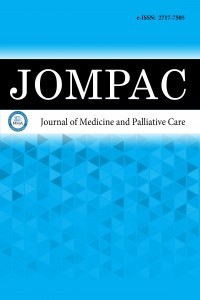1.
Kanat BH, Sözen S. Disease that should be remembered:sacrococcygeal pilonidal sinus disease and short history. World JClin Cases. 2015;3(10):876-879. doi: 10.12998/wjcc.v3.i10.876
2.
Kober MM, Alapati U, Khachemoune A. Treatment options forpilonidal sinus. Cutis. 2018;102(4):E23-E29.
3.
Kumar M, Clay WH, Lee MJ, Brown SR, Hind D. A mappingreview of sacrococcygeal pilonidal sinus disease. Tech Coloproctol.2021;25(6):675-682. doi: 10.1007/s10151-021-02432-9
4.
Sarı R, Akbaba S, Gündoğdu RH, Yazıcıoğlu MÖ. Comparisonof VY flap and Limberg flap methods in pilonidal sinus surgery.Turk J Colorectal Dis. 2019;29(2):69-74. doi:10.4274/tjcd.galenos.2018.10437
5.
Danilov MA, Saakyan GG, Leontyev AV, Baichorov AB, AbdulatipovaZM. Rezul'taty khirurgicheskogo lecheniya epitelial'nogokopchikovogo khoda s ispol'zovaniem plastiki po Limbergu[Limberg flap reconstruction for pilonidal sinus]. Khirurgiia (Mosk).2021;(11):34-38. Russian. doi: 10.17116/hirurgia202111134
6.
Giuseppe F, Silvia DG, Patrizia R, et al. Pilonidal sinus disease:preliminary case-control study on heat-related wound dehiscence.Ann Med Surg. 2019;48:144-149. doi: 10.1016/j.amsu.2019.07.032
7.
Bi S, Sun K, Chen S, Gu J. Surgical procedures in the pilonidalsinus disease: a systematic review and network meta-analysis. SciRep. 2020;10(1):13720. doi: 10.1038/s41598-020-70641-7
8.
Collings AT, Rymeski B. Updates on the management ofpilonidal disease. Adv Pediatr. 2022;69(1):231-241. doi:10.1016/j.yapd.2022.03.001
9.
Gozukucuk A, Cakiroglu B, Yapici S, Cesur IB, Ozcelik Z, KilicHH. Comparing crystallized phenol and surgical excisiontreatments in pilonidal sinus disease. J Coll Physicians Surg Pak.2022;32(5):652-657. doi: 10.29271/jcpsp.2022.05.652
10.
Lund J, Tou S, Doleman B, Williams JP. Fibrin glue for pilonidalsinus disease. Cochrane Database Syst Rev. 2017;1(1):CD011923.doi: 10.1002/14651858.CD011923.pub2
11.
Williams MD, Sullivan GA, Nimmagadda N, et al. Laser ablationof pilonidal sinus disease: a pilot study. Dis Colon Rectum.2023;66(5):e224-e227. doi: 10.1097/DCR.0000000000002745
12.
Halleran DR, Onwuka AJ, Lawrence AE, Fischer BC, Deans KJ,Minneci PC. Laser hair depilation in the treatment of pilonidaldisease: a systematic review. Surg Infect. 2018;19(6):566-572. doi:10.1089/sur.2018.099
13.
Bi S, Sun K, Chen S, Gu J. Surgical procedures in the pilonidalsinus disease: a systematic review and network meta-analysis. SciRep. 2020;10(1):13720. doi: 10.1038/s41598-020-70641-7
14.
Can MF, Sevinc MM, Hancerliogullari O, Yilmaz M, Yagci G.Multicenter prospective randomized trial comparing modifiedLimberg flap transposition and Karydakis flap reconstructionin patients with sacrococcygeal pilonidal disease. Am J Surg.2010;200(3):318-327. doi: 10.1016/j.amjsurg.2009.08.042
15.
Sewefy AM, Hassanen A, Atyia AM, Saleh SK. Karydakis flapwith compressing tie-over interrupted sutures without drainversus standard Karydakis for treatment of sacrococcygealpilonidal sinus disease. Dis Colon Rectum. 2017;60(5):514-520.doi: 10.1097/DCR.0000000000000784
16.
Sahin A, Simsek G, Arslan K. Unroofing curettage versusmodified Limberg flap in pilonidal disease: a retrospective cohortstudy. Dis Colon Rectum. 2022;65(10):1241-1250. doi: 10.1097/DCR.0000000000002227
17.
Gavriilidis P, Bota E. Limberg flap versus Karydakis flap fortreating pilonidal sinus disease: a systematic review and meta-analysis. Can J Surg. 2019;62(2):131-138. doi: 10.1503/cjs.003018
18.
Boshnaq M, Phan YC, Martini I, Harilingam M, Akhtar M,Tsavellas G. Limberg flap in management of pilonidal sinusdisease: systematic review and a local experience. Acta Chir Belg.2018;118(2):78-84. doi: 10.1080/00015458.2018.1430218
19.
Destek S, Bektaşoğlu HK, Kunduz E, Akyüz MN. Comparison ofpostoperative quality of life of Limberg flap and Karydakis flapin pilonidal sinus operations. Turk J Surg. 2020;36(1):59-64. doi:10.5578/turkjsurg.4598
20.
Alvandipour M, Zamani MS, Ghorbani M, Charati JY, KaramiMY. Comparison of Limberg flap and Karydakis flap surgeryfor the treatment of patients with pilonidal sinus disease: asingle-blinded parallel randomized study. Ann Coloproctol.2019;35(6):313-318. doi: 10.3393/ac.2018.09.27

